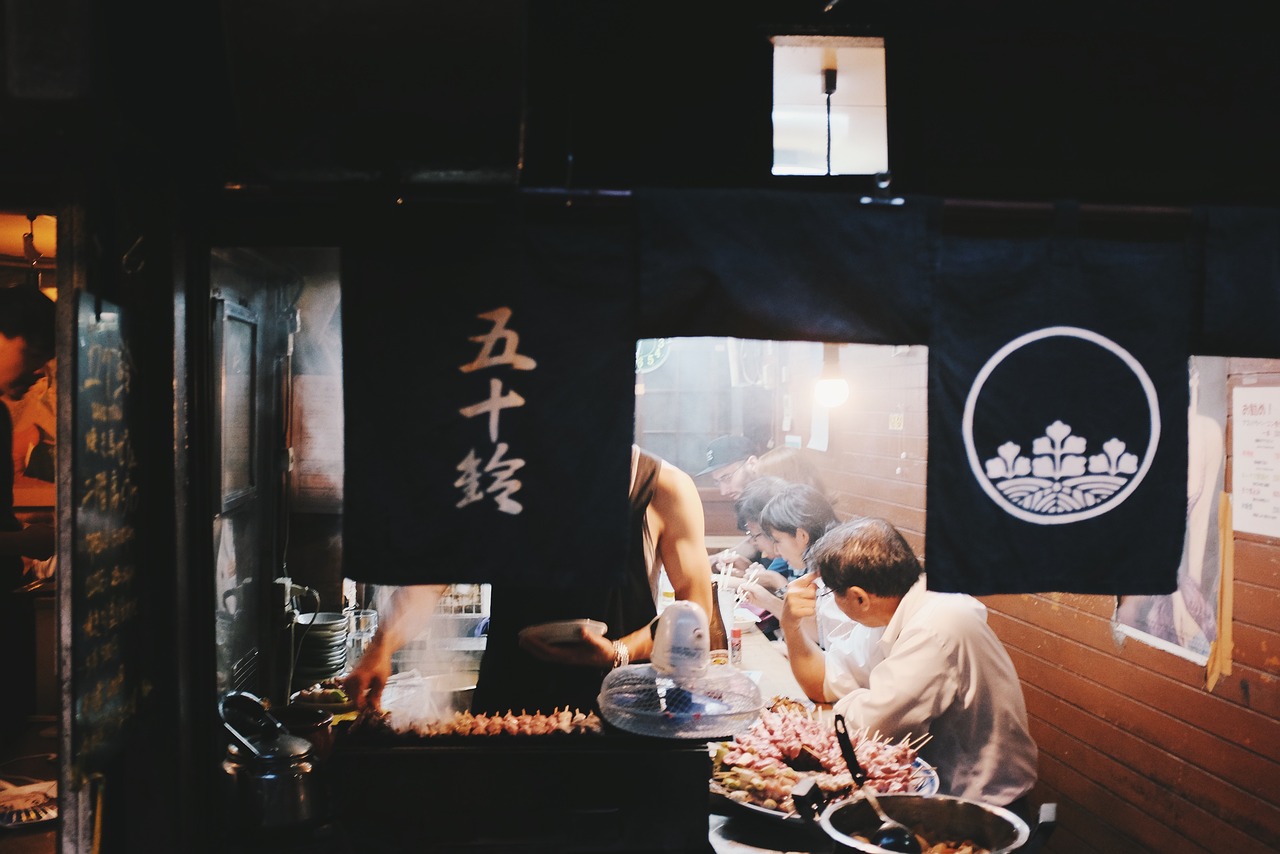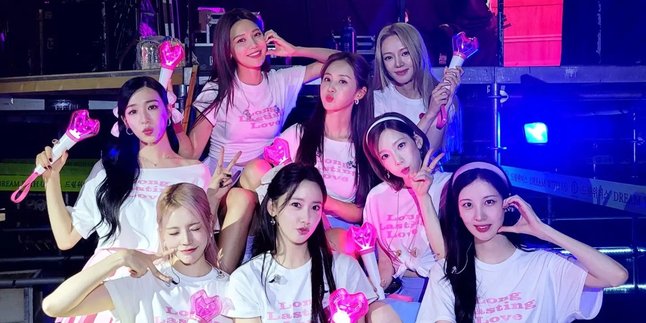Kapanlagi.com - This article will take KLovers on an interesting journey exploring expressions of Japanese restaurant language, the history and development of restaurants in Japan, to the various types of restaurants that adorn the culinary landscape in the very popular Land of the Cherry Blossom.
Each type of Japanese restaurant offers a unique and unforgettable experience. For those of you who are curious, you can delve into the richness of Japanese culinary culture, from Japanese restaurant language to the historical journey that shaped the restaurant industry in Japan today.
For those of you who are curious, here are Japanese expressions for restaurants complete with history and types of restaurants. Let's check it out, KLovers!
1. Japanese Restaurant Language and Its Examples

Illustration (credit: pixabay.com)
The Japanese language has become one of the most studied languages. There are many vocabulary words you can learn, one of which is the Japanese restaurant language commonly referred to as "resutoran". This term is a loanword from the English word "restaurant" that has been adapted to the phonological system of the Japanese language.
Although resutoran is the most commonly used term for restaurants in modern Japan, there are several traditional Japanese terms that also refer to dining places, depending on the type and style of the restaurant. For example, "shokudo" which literally means "dining room", usually refers to cafeterias or simple restaurants.
The term shokudo refers to restaurants that serve everyday Japanese food. Then there is "ryoriya" which literally means "cooking house" and is often used for more formal traditional Japanese restaurants. Then there is "izakaya", a term for Japanese-style pubs that serve alcoholic beverages and snacks.
Next, there is "kappo" which refers to high-end restaurants that serve traditional Japanese cuisine in a more informal style compared to formal kaiseki restaurants. The use of these Japanese restaurant terms reflects the richness of Japanese culinary culture and the various dining experiences offered.
Each term carries its own nuances and expectations about the type of food, atmosphere, and level of formality that customers will encounter. However, in everyday conversation and especially when speaking with foreigners, "resutoran" remains the most common and easily understood term to refer to restaurants in general.
To better understand the Japanese restaurant language, KLovers can learn the following examples of Japanese restaurant sentences:
"Resutoran wa doko desu ka?" Meaning: Where is the restaurant?
"Kono resutoran no ryouri wa oishii desu." Meaning: The food at this restaurant is delicious.
"Watashi wa yoku kono resutoran ni kimasu." Meaning: I often come to this restaurant.
"Resutoran no yoyaku wo shitai desu." Meaning: I want to make a reservation at the restaurant.
"Kono resutoran wa itsumo konzatsu shiteimasu." Meaning: This restaurant is always crowded.
"Resutoran no menya- wo misete kudasai." Meaning: Please show me the restaurant menu.
2. History of Restaurants in Japanese Culture

Illustration (credit: pixabay.com)
In addition to knowing the Japanese restaurant language, KLovers can also learn about the history of restaurants in Japanese culture. The history of restaurants in Japanese culture has deep and diverse roots. Here is an explanation of the development of restaurants in Japanese culture:
1. The Beginning (Edo Period, 1603-1868):
The concept of modern restaurants began to develop during the Edo period. Previously, public dining places were generally tea houses or small stalls serving simple food for travelers.
2. The Emergence of Izakaya:
Izakaya, which initially only sold sake, began offering snacks to accompany drinks. This became the precursor to the gastropub concept in Japan.
3. Soba and Udon Restaurants:
Soba and udon shops have become popular in major cities, serving noodles as traditional Japanese fast food.
4.Western Influence (Meiji Period, 1868-1912):
With Japan opening up to Western influences, European-style restaurants began to emerge, introducing the concept of "yōshoku" or Western-style Japanese cuisine.
5.Post World War II Development:
After World War II, various types of restaurants flourished, including family restaurants, fast food chains, and modern izakayas.
6.Modern Era:
Today, Japan has a wide variety of restaurants, from simple ramen shops to Michelin-starred establishments, reflecting the richness and diversity of Japanese culinary culture.
7.Technological Innovation:
Japan is also known for innovations in restaurant service, such as automated ordering systems and conveyor belt sushi restaurants.
8.Globalization:
Japanese restaurants have spread worldwide, popularizing Japanese cuisine globally and conversely bringing international influences into the restaurant industry in Japan.
The development of restaurants in Japan reflects the social, economic, and cultural changes of the country, blending tradition with modern innovation to create a unique and diverse culinary landscape.
3. Types of Restaurants in Japanese Culture

Illustration (credit: pixabay.com)
KLovers can also learn about the types of restaurants in Japanese culture. Each type of restaurant offers a unique dining experience and reflects the diversity of Japanese cuisine. Here are some common types of Japanese restaurants along with their explanations:
1.Izakaya
A Japanese-style pub that serves various small dishes to accompany alcoholic drinks. The atmosphere is casual and suitable for gathering with friends.
2.Sushi-ya
A restaurant specializing in sushi, whether traditional with a sushi chef behind the counter or conveyor belt sushi (kaiten-zushi).
3.Ramen-ya
A shop that focuses on serving ramen. Typically has an informal and fast-food atmosphere.
4.Kaiseki
A luxurious restaurant that serves kaiseki ryori, a traditional multi-course Japanese meal that is very refined and seasonal.
5.Teppanyaki
A restaurant where chefs cook food on a flat iron grill in front of customers, often with a cooking skill performance.
6.Okonomiyaki-ya
A restaurant that specializes in okonomiyaki, a type of savory pancake cooked on a flat grill.
7.Yakiniku
A restaurant where customers grill pieces of meat and vegetables on a grill at their table.
8.Tonkatsu-ya
A restaurant that specializes in tonkatsu, a breaded and fried pork cutlet.
9.Soba-ya/Udon-ya
A shop that focuses on soba dishes (buckwheat noodles) or udon (thick wheat noodles).
10. Tempura-ya
A restaurant that specializes in tempura, food that is fried in a light and crispy batter.
11.Robatayaki
A restaurant where food is grilled over charcoal in front of the customers.
12.Kappo
A formal restaurant that serves high-end Japanese cuisine, but in a more relaxed atmosphere compared to kaiseki.
13.Shokudo
A cafeteria or canteen that serves a variety of everyday Japanese dishes at affordable prices.
14.Yakitori-ya
A restaurant that specializes in yakitori, grilled chicken skewers.
15.Kaitenzushi
A sushi restaurant where plates of sushi rotate on a conveyor belt, allowing customers to pick directly from the belt.
These are expressions of Japanese restaurant types that KLovers can know. Through language, history, and the diversity of its restaurants, we can understand and appreciate the richness of Japan's amazing culinary culture.
(kpl/dhm)
Disclaimer: This translation from Bahasa Indonesia to English has been generated by Artificial Intelligence.















